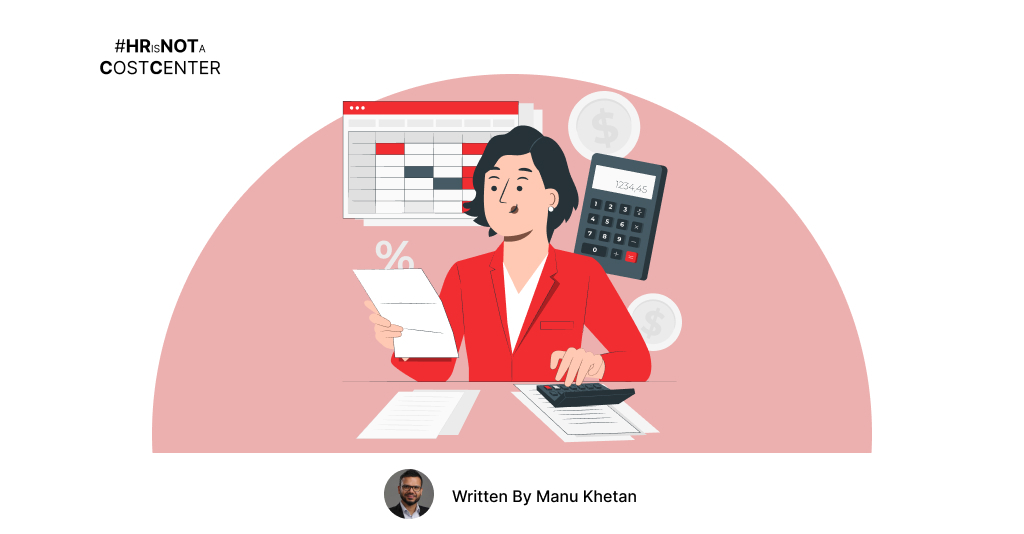
Resources > Manu’s Blog > How Much Profit Can You Make from Expense Management Software? Find Out with This ROI Calculator
How Much Profit Can You Make from Expense Management Software? Find Out with This ROI Calculator
Founder & CEO – Rolling Arrays

Originally Published on LinkedIn
Managing expenses is a tedious and time-consuming task for any business. From collecting receipts and invoices to submitting expense reports and processing reimbursements, many steps are involved in tracking and controlling business expenses. Not to mention the risk of errors, fraud, and non-compliance resulting from manual and paper-based processes.
This is why many businesses use expense management software to automate and streamline their processes. Expense management software is a tool that helps companies to track, report, and reimburses expenses quickly and efficiently. It can also provide valuable insights into spending patterns, budget performance, policy compliance, and fraud prevention.
But how do you know if investing in expense management software is worth it? How do you measure the value and impact of such software on your business? ROI stands for Return on Investment, a metric that shows how much profit you get from investing in something.
This blog post will show you how to calculate the tangible ROI of good expense management software using a simple formula and an example. Doing so lets you make informed decisions about software investments and understand their potential value for your business.
Step 1: Identify the costs of investment
The first step to calculating the ROI of expense management software is to identify the investment costs. You incur these expenses when you purchase and implement the software for your business.
- License fees: You pay these fees to use the software as a one-time payment or a recurring subscription. The license fees may vary depending on the number of users, features, and support options you choose.
- Training costs: These are the costs you spend on training your employees to use the software effectively and efficiently. Training costs may include hiring external trainers, creating internal manuals or videos, or allocating time for employees to learn independently.
- Maintenance costs: You incur these costs to keep the software running smoothly and securely. Maintenance costs may include updating the software, fixing bugs, resolving issues, backing up data, or renewing licenses.
- Integration costs: These are the costs you face to integrate the software with your existing systems and processes. Integration costs may include customising the software, connecting it with other applications (such as accounting or payroll), or hiring consultants or developers.
Step 2: Identify the benefits of investment
The second step to calculate the ROI of expense management software is to identify investment benefits. Then, you achieve these savings and gains by using the software for your business.
Some of the common types of benefits that expense management software can bring are:
For employees:
- Time savings: You save these hours by automating and streamlining the expense reporting and reimbursement process. According to a GBTA study, the average time to complete an expense report is 20 minutes. Expense management software can significantly reduce this time and free up time for other productive tasks.
- Error reduction: You and your employees avoid these mistakes using a more accurate and reliable cost management system. Error reduction may include minimising errors in data entry, calculation, classification, or verification of expense reports. The same GBTA study also found that approximately 20% of expense reports have errors. By using expense management software, you can reduce these errors and ensure compliance with your policies and regulations.
- Compliance improvement: You prevent these penalties and fines by following the rules and standards for reporting and reimbursing expenses. Compliance improvement may include complying with tax laws, accounting principles, internal policies, or external contracts. Expense management software can automatically enforce your compliance requirements and avoid any legal or financial risks.
- Policy enforcement: These are the overspending and fraud you deter by setting and applying limits and controls for your expenses. Policy enforcement may include developing budgets, categories, rates, or approvals for different costs. In addition, spending patterns can be monitored, and anomalies may be flagged with expense management software.
- Step 3: Calculate the ROI ratio
The third and final step to calculate the ROI of expense management software is to calculate the ROI ratio. This percentage shows how much return you get for every dollar you invest in the software.
To calculate the ROI ratio, you need to use the following formula:
ROI = (Gain of Investment) – (Cost of Investment) / (Cost of Investment)
The gain of investment is the total benefits you get from using the software. Conversely, the investment cost is the total cost you incur for purchasing and implementing the software.
One of the main benefits that expense management software can bring is saving time and money by automating and streamlining the expense reporting and reimbursement process. Modern expense management software, such as Reimburse, uses OCR and AI to build these features.
Let’s see how modern expense management software can help you save time and money by using some numbers:
- Time savings: If an employee spends 30 minutes per week collecting, scanning, creating, and submitting expenses, this translates to 2 hours of their monthly productive time. Modern expense management software can cut down 70% of the time spent collecting, scanning, creating and submitting expense details. If a company has 1000 employees, we are talking about 1,500 hours or 187 days of productive time.
- Error reduction: If a manager has five direct reports and each one of them submits five expenses per week, that translates to 25 expenses per week or 100 expenses per month. On average, more than 10% of total approved expenses are duplicate or non-compliant. An AI-enabled expense management software can automatically eliminate duplicate or non-compliant expenses. On average, if each expense is $20, this translates to a saving of $40 per employee per month or $480 per employee per year. If your company has 1,000 employees, this translates to a saving of $480,000 per year.
To calculate the ROI ratio, you need to subtract the investment cost from the gain and divide it by the investment cost.
Suppose you pay $5.99 per user per month for 1,000 users; your investment cost would be $5.99 x 1,000 x 12 = $71,880 per year.
The gain of investment depends on your time savings and error reduction benefits. For example, if you save $480000 in error reduction and value your productive time at $50 per hour (conservative), your investment gain would be $480,000 + ($50 x 1500) = $555,000 per year.
Using these values in the formula,
ROI = ($555000 – $71,880) / ($71880) = 6.72
This means you get back $6.72 in benefits for every dollar you invest.
Conclusion
Calculating the ROI of expense management software can help you decide whether to invest in it or not.
Following these three steps, you can estimate the costs and benefits of using the software for your business and compare different options.
Modern expense management software like Reimburse can provide a high ROI by saving time and money and reducing errors and risks.
About Manu Khetan
Manu, Founder and CEO of Rolling Arrays, a global HR technology leader, brings two decades of expertise to redefine HR practices. Passionate about pioneering HR automation and nurturing talent, Manu advocates for a customer-first and employee-first approach, prioritizing value creation. Beyond the boardroom, he is a dedicated family man, a skilled pianist, and an advocate for empowering the next generation of entrepreneurs. Join Manu on the transformative journey where HR emerges as a dynamic force for positive change in the business world.




Share with your network
Get updates in your inbox